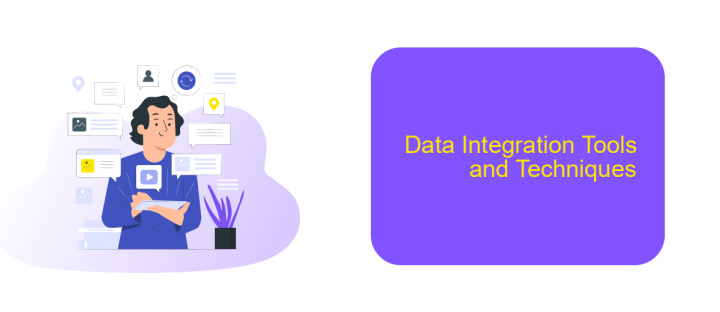Meaning of Data Integration
Data integration is the process of combining data from different sources to provide a unified view. It is essential for businesses to make informed decisions, streamline operations, and enhance data quality. This article explores the significance of data integration, its benefits, and the challenges organizations face in implementing effective data integration strategies. Understanding these aspects is crucial for leveraging data to its fullest potential.
Introduction of Data Integration
Data integration is a crucial process in modern business environments, enabling seamless communication and data flow between various systems and applications. It involves combining data from different sources to provide a unified view, enhancing decision-making and operational efficiency.
- Combines data from multiple sources
- Ensures data consistency and quality
- Enhances decision-making processes
- Improves operational efficiency
One of the tools that simplify data integration is ApiX-Drive. This service provides an intuitive interface for setting up integrations between different platforms without requiring extensive technical knowledge. By leveraging ApiX-Drive, businesses can automate data transfer, reduce manual errors, and achieve a more cohesive data environment.
Benefits of Data Integration

Data integration offers numerous benefits to organizations by consolidating disparate data sources into a cohesive and unified view. This process enhances decision-making capabilities by providing a more comprehensive and accurate picture of business operations. With integrated data, companies can identify trends, uncover insights, and make informed decisions that drive growth and efficiency. Additionally, data integration reduces redundancy and ensures consistency across various systems, which streamlines operations and minimizes the risk of errors.
Another significant advantage of data integration is the improved collaboration it fosters among departments. When data is easily accessible and seamlessly shared, teams can work together more effectively, leading to increased productivity and innovation. Tools like ApiX-Drive facilitate this process by automating the integration of various applications and services, ensuring that data flows smoothly and reliably between systems. By leveraging such tools, organizations can save time and resources, allowing them to focus on strategic initiatives rather than manual data management tasks.
Challenges of Data Integration

Data integration presents several challenges that organizations must address to ensure seamless and efficient data flow across various systems. These challenges can significantly impact the quality, consistency, and accessibility of integrated data.
- Data Quality and Consistency: Ensuring that data from different sources is accurate, complete, and consistent can be difficult, leading to potential errors and discrepancies.
- Data Security: Integrating data from multiple sources increases the risk of data breaches and unauthorized access, necessitating robust security measures.
- Scalability: As organizations grow, their data integration solutions must scale accordingly, which can be challenging without the right infrastructure.
- Complexity of Integration: Different systems may use various formats and protocols, making the integration process complex and time-consuming.
- Real-time Data Processing: Achieving real-time data integration requires advanced technologies and can be resource-intensive.
Using services like ApiX-Drive can help mitigate these challenges by providing a user-friendly platform for setting up and managing data integrations. ApiX-Drive supports multiple data sources and formats, ensuring data quality and security while offering scalable solutions to meet growing organizational needs. By leveraging such services, businesses can streamline their data integration processes and focus on deriving actionable insights from their data.
Data Integration Tools and Techniques

Data integration is the process of combining data from different sources to provide a unified view. This is essential for businesses to make informed decisions and streamline their operations. Various tools and techniques are available to facilitate data integration, ensuring that data is accurately and efficiently merged.
One popular tool for data integration is ApiX-Drive, which allows users to automate the transfer of data between different applications and services. This platform is user-friendly and does not require any coding skills, making it accessible to a wide range of users.
- ETL (Extract, Transform, Load) tools
- Data warehousing solutions
- API integration platforms like ApiX-Drive
- Data virtualization tools
Using these tools and techniques, businesses can ensure data consistency, improve data quality, and reduce the time and effort required for data management. By leveraging platforms like ApiX-Drive, organizations can automate complex data workflows and focus on deriving insights from their integrated data.
- Automate the work of an online store or landing
- Empower through integration
- Don't spend money on programmers and integrators
- Save time by automating routine tasks
Conclusion
Data integration is a crucial process for organizations aiming to consolidate information from various sources into a unified view, enhancing decision-making and operational efficiency. By breaking down data silos, businesses can gain comprehensive insights, streamline workflows, and improve data accuracy. The integration process can be complex, involving different data formats and systems, but the benefits far outweigh the challenges.
Tools and services such as ApiX-Drive facilitate seamless data integration by automating the transfer and synchronization of data between multiple platforms. This not only saves time but also reduces the risk of errors associated with manual data handling. As technology continues to evolve, the importance of effective data integration will only grow, making it an indispensable component of modern business strategy.
FAQ
What is Data Integration?
Why is Data Integration important?
What are the common challenges in Data Integration?
How can businesses automate Data Integration?
What is ApiX-Drive and how does it help with Data Integration?
Apix-Drive is a simple and efficient system connector that will help you automate routine tasks and optimize business processes. You can save time and money, direct these resources to more important purposes. Test ApiX-Drive and make sure that this tool will relieve your employees and after 5 minutes of settings your business will start working faster.


